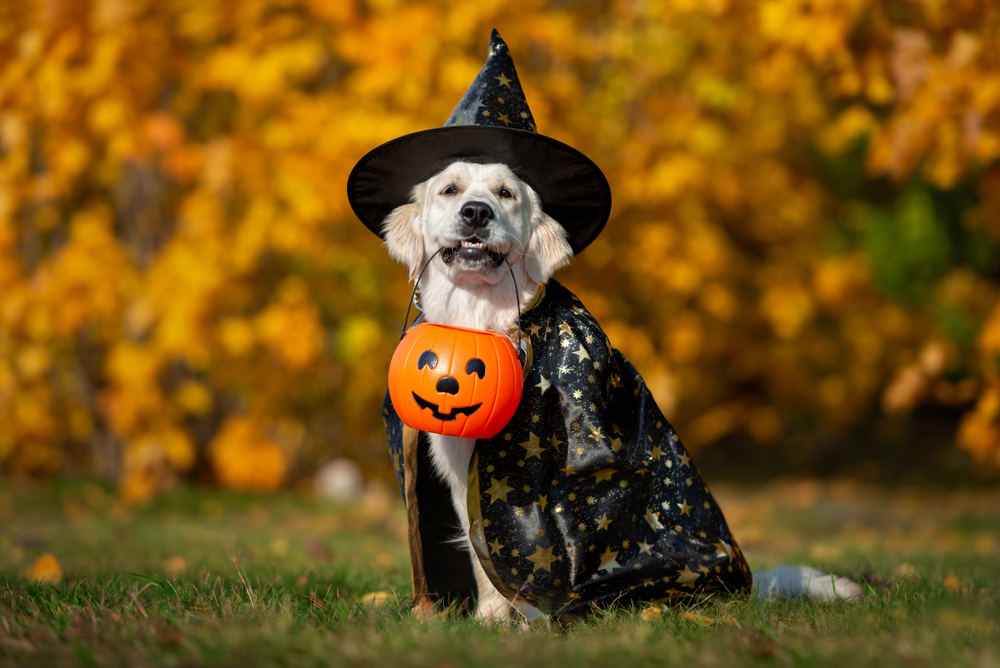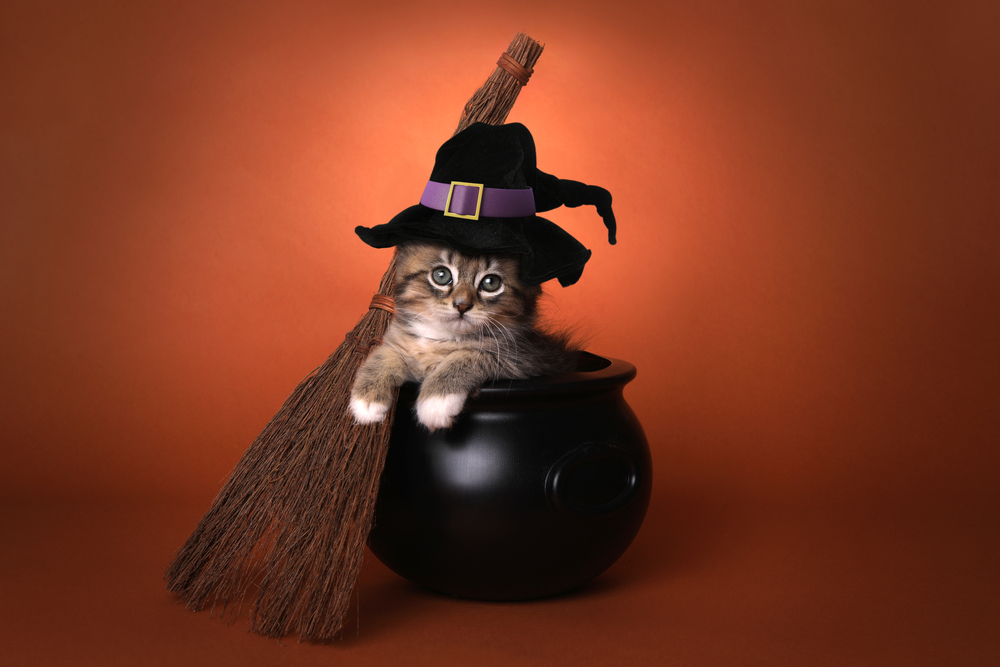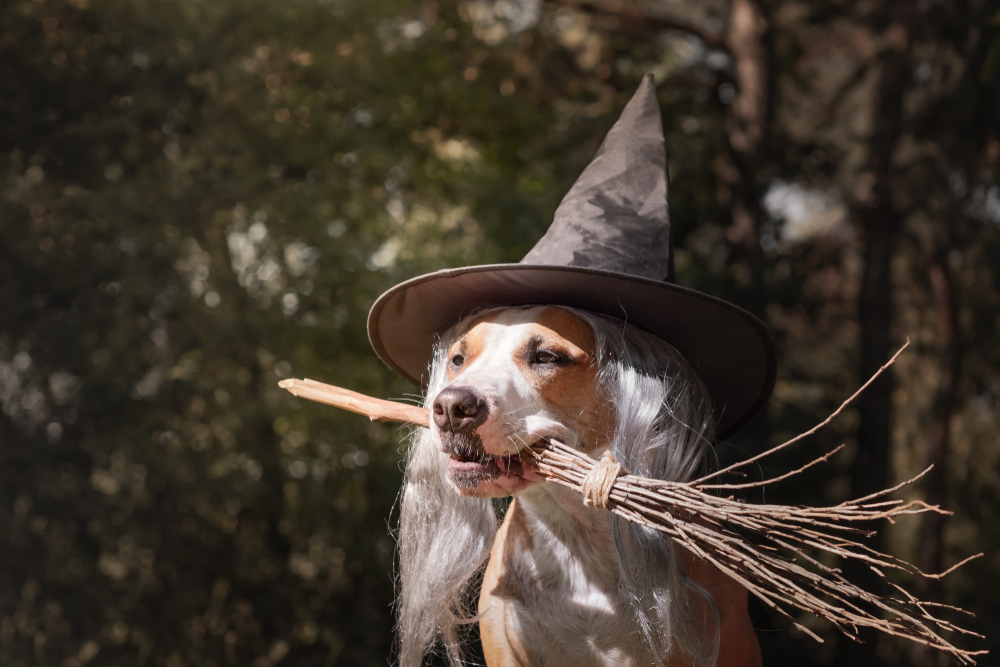With Halloween rapidly approaching, it’s time for pet parents to begin planning their fur baby’s costume. As a pet owner, you already know that Halloween candy is a big no-no for your cats and dogs, since both chocolate and raisins are toxic. But that’s not all you should be aware of as spooky season kicks into full swing. Whether you plan to dress your pet as a frightening ghost or an adorable bumblebee, Halloween costumes are not without their hidden dangers. Let’s look closer at a few costume-specific things to avoid during Halloween for pets — big or small.

1. Choose nonflammable materials
We don’t doubt that you already do everything in your power to keep your pet away from an open flame, but that doesn’t mean you should skimp on safety when it comes to your pet’s Halloween costume. The vast majority of costumes are made from flammable materials. If your beloved pet gets too close to the neighborhood bonfire, he risks having his costume catch fire. Not only does selecting a costume made of nonflammable materials keep your pet safe, but it also protects those around you from sustaining dangerous burns.
2. Avoid costumes with accessories your pet can swallow
While it may be tempting to dress your dog as Batman, Halloween costumes with accessories like masks, belts, or boots are uncomfortable. You should also keep an eye out for hidden details like draping fabric or small buttons. Many pets love to chew, and the last thing you want is for Spot to eat his boots. (You may end up spending Halloween at the emergency vet instead of handing out candy to trick-or-treaters.) Instead, opt for a costume that won’t obstruct your pet’s vision or movements. If you’re dead set on a costume with a mask, restrict the length of time your pet wears it. Additionally, you shouldn’t let your fur baby out of your sight while he’s wearing any costume.
3. Make sure your pet is easily identifiable
Whether you plan to stay at home or take your pet to a Halloween party, please ensure he’s wearing a visible name tag with your current contact information written on it. Even seasoned Halloween veterans may bolt outside to investigate the commotion, and you don’t want your fur baby to get lost. If you haven’t already, you may want to consider microchipping your pet. Should your fur baby sneak outside, there’s a greater chance you’ll be reunited if your pet is microchipped.

4. Prepare your pet for the big day
Unless your fur baby is used to wearing clothes, trying on a Halloween costume for the first time can be stressful. Introduce your pet to his costume slowly and make sure you give him a few tasty treats to entice them. Once he associates his costume with getting extra love and something to snack on, he’ll be more likely to view dressing up as a pleasant experience. However, not all pets enjoy wearing costumes, treats or not. If that’s the case with your pet, you may want to opt for a Halloween-themed collar instead of a full costume.
5. Consider the color scheme
As tempting as it may be to dress a black cat or dog in an all-black outfit, it’s also incredibly dangerous. Your neighborhood will be packed with cars as trick-or-treaters and partygoers celebrate, which makes visibility all the more important on Halloween night. Choose a bright, colorful costume made of reflective material to ensure your pet is highly visible. If you can’t find a reflective costume, add a few strips of reflective tape to help keep your pet safe.
6. Plan your costume in advance
Have you ever had a dog who barked incessantly the instant you put on a hat? The same applies to Halloween costumes. While your dog or cat may not think a werewolf mask is scary in the same way we do, costumes that obscure your face or distort your proportions can be terrifying for pets. Give your pet time to adjust to your spooky new look — and reconsider costumes that conceal your face.

Halloween isn’t just for humans these days. With a plethora of Halloween costumes for pets available, it’s not easy to choose the right one. You want your pet to look festive without sacrificing his safety. Fortunately, our top six tips can make the process easier for you. If you follow our guidelines, you and your fur baby can have a safe and happy Halloween.



